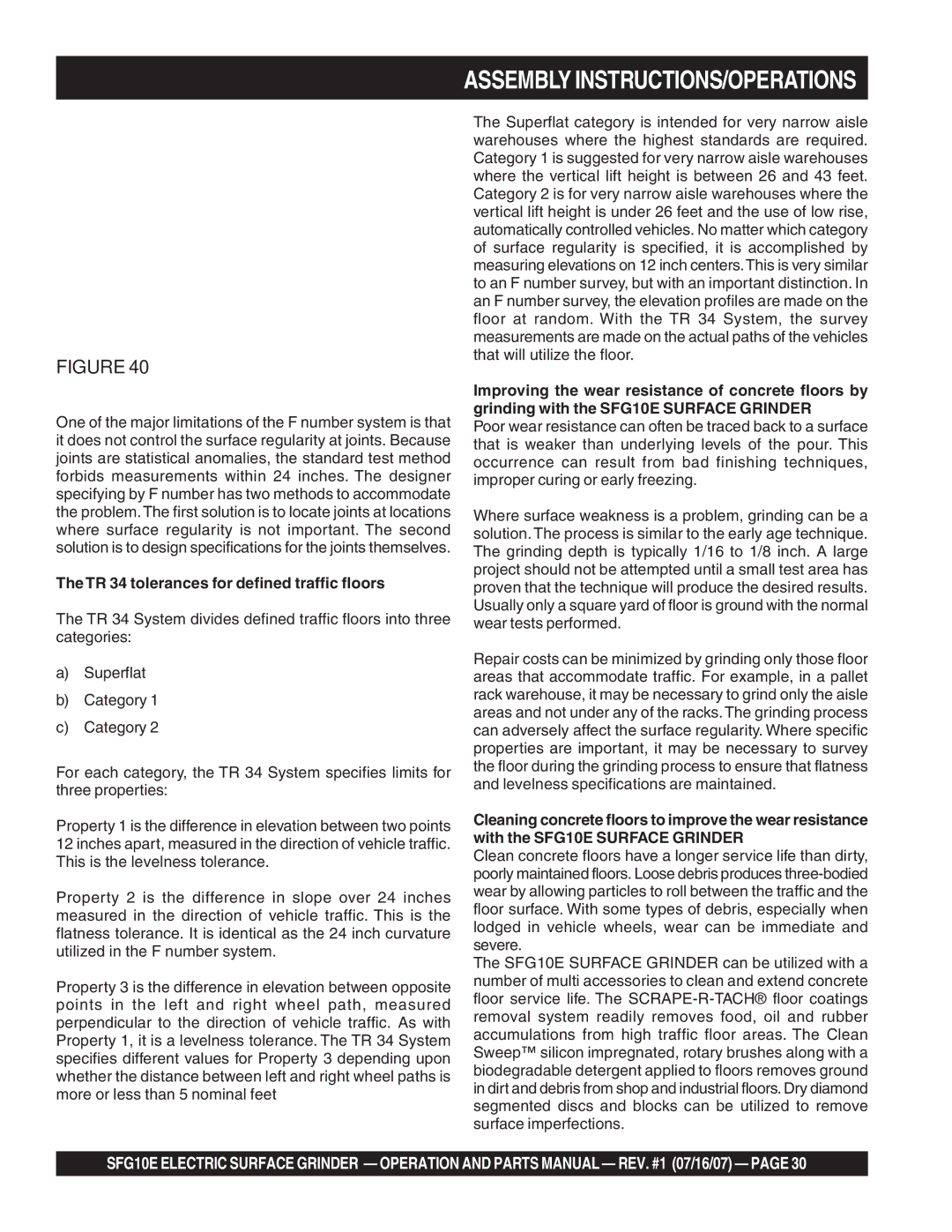SFG10E specifications
The Stow SFG10E is a versatile and robust generator designed for various applications, making it an ideal solution for both commercial and residential use. Its compact size and durable construction cater to the need for reliable power in both urban and rural settings.One of the main features of the SFG10E is its impressive power output. With a maximum output of 10 kVA, it is capable of handling several appliances and tools simultaneously, making it perfect for construction sites, outdoor events, and backup power for homes during outages. The generator is powered by a highly efficient diesel engine, providing enhanced fuel economy and extended run times, which is vital for users who require consistent power for extended periods.
The SFG10E is equipped with advanced technologies that enhance its performance and usability. Its automatic voltage regulation (AVR) ensures that the output voltage remains stable, protecting connected devices from voltage spikes and fluctuations that could cause damage. Additionally, the generator features an easy-to-read digital control panel, allowing users to monitor performance metrics such as voltage, frequency, and runtime at a glance.
Another characteristic that sets the SFG10E apart is its user-friendly design. It features a built-in fuel gauge, making it easy for users to monitor fuel levels and plan for refueling as needed. The compact and lightweight design ensures portability, making it easy to transport to different locations when required. Furthermore, the generator is designed with noise reduction in mind. Its sound-dampening technology minimizes operational noise, making it suitable for use in noise-sensitive environments.
Safety is also a priority in the design of the SFG10E. It includes several safety features such as low oil shutdown, overload protection, and an emergency stop function, providing peace of mind to users who depend on it for their power needs. Its rugged construction is further enhanced by weather-resistant materials, allowing it to withstand the elements, whether in sunny, rainy, or windy conditions.
In conclusion, the Stow SFG10E generator combines power, efficiency, and safety in a compact and portable design. With its advanced features and technologies, it stands out as a dependable choice for those needing reliable electricity in various environments, whether at home, on a job site, or while enjoying outdoor activities. Its emphasis on user-friendliness and safety makes it not just efficient but also easy to operate for users of all experience levels.

